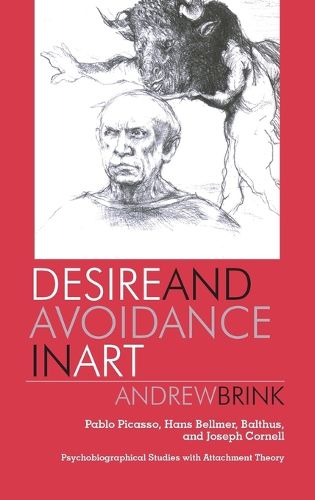Readings Newsletter
Become a Readings Member to make your shopping experience even easier.
Sign in or sign up for free!
You’re not far away from qualifying for FREE standard shipping within Australia
You’ve qualified for FREE standard shipping within Australia
The cart is loading…






This title is printed to order. This book may have been self-published. If so, we cannot guarantee the quality of the content. In the main most books will have gone through the editing process however some may not. We therefore suggest that you be aware of this before ordering this book. If in doubt check either the author or publisher’s details as we are unable to accept any returns unless they are faulty. Please contact us if you have any questions.
Desire and Avoidance in Art argues that while early developmental traumas can produce life-long creative endeavors with striking aesthetic results, they may also, for the male artist, result in destructive relations with women. Brink introduces the scheme of personality formation - as found in the work on infant and child development of John Bowlby, Mary Ainsworth, Mary Main, Patricia Crittenden, Allen N. Schore, and others - to explore a new venture in psychobiography. He effectively uses the concept of anxious attachment to describe mother-infant/child relations and their sequelae. Using pertinent developmental data found in each artist’s childhood, Andrew Brink accounts for the anxious-avoidant attachment style (or, in Crittenden’s terminology, the Anxious/Controlling style) from which these artists suffered. He aims to explain why partnerships with women are sometimes hazardous and frequently tragic for male artists by referencing various feminist writers. Based on their viewpoints, Brink extracts psychodynamic explanations that are largely based on what the artists’ imagery reveals. Furthermore, he explains how the attachment theory of attraction-avoidance is shown to supplement and enrich other ways of understanding chronically tense relations between the sexes. Brink focuses his attention on artists such as Picasso, Bellmer, Balthus, and Cornell, who are culturally powerful and often stimulate discussion about misogynic figures within a social context.
$9.00 standard shipping within Australia
FREE standard shipping within Australia for orders over $100.00
Express & International shipping calculated at checkout
This title is printed to order. This book may have been self-published. If so, we cannot guarantee the quality of the content. In the main most books will have gone through the editing process however some may not. We therefore suggest that you be aware of this before ordering this book. If in doubt check either the author or publisher’s details as we are unable to accept any returns unless they are faulty. Please contact us if you have any questions.
Desire and Avoidance in Art argues that while early developmental traumas can produce life-long creative endeavors with striking aesthetic results, they may also, for the male artist, result in destructive relations with women. Brink introduces the scheme of personality formation - as found in the work on infant and child development of John Bowlby, Mary Ainsworth, Mary Main, Patricia Crittenden, Allen N. Schore, and others - to explore a new venture in psychobiography. He effectively uses the concept of anxious attachment to describe mother-infant/child relations and their sequelae. Using pertinent developmental data found in each artist’s childhood, Andrew Brink accounts for the anxious-avoidant attachment style (or, in Crittenden’s terminology, the Anxious/Controlling style) from which these artists suffered. He aims to explain why partnerships with women are sometimes hazardous and frequently tragic for male artists by referencing various feminist writers. Based on their viewpoints, Brink extracts psychodynamic explanations that are largely based on what the artists’ imagery reveals. Furthermore, he explains how the attachment theory of attraction-avoidance is shown to supplement and enrich other ways of understanding chronically tense relations between the sexes. Brink focuses his attention on artists such as Picasso, Bellmer, Balthus, and Cornell, who are culturally powerful and often stimulate discussion about misogynic figures within a social context.